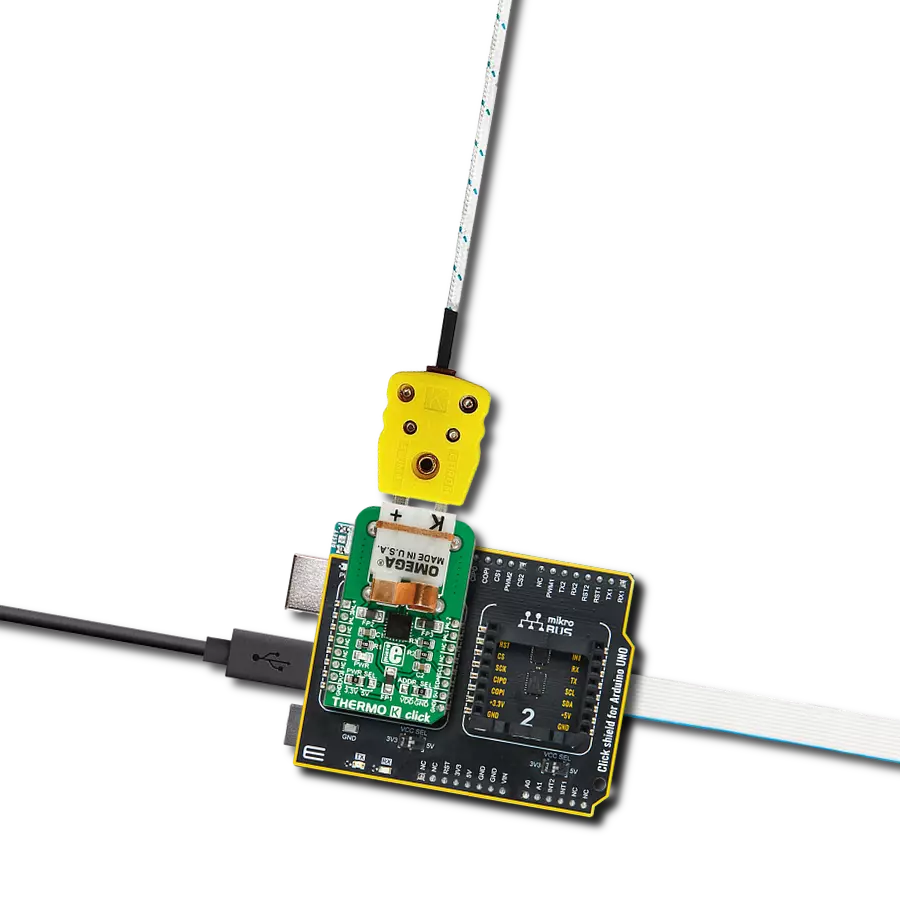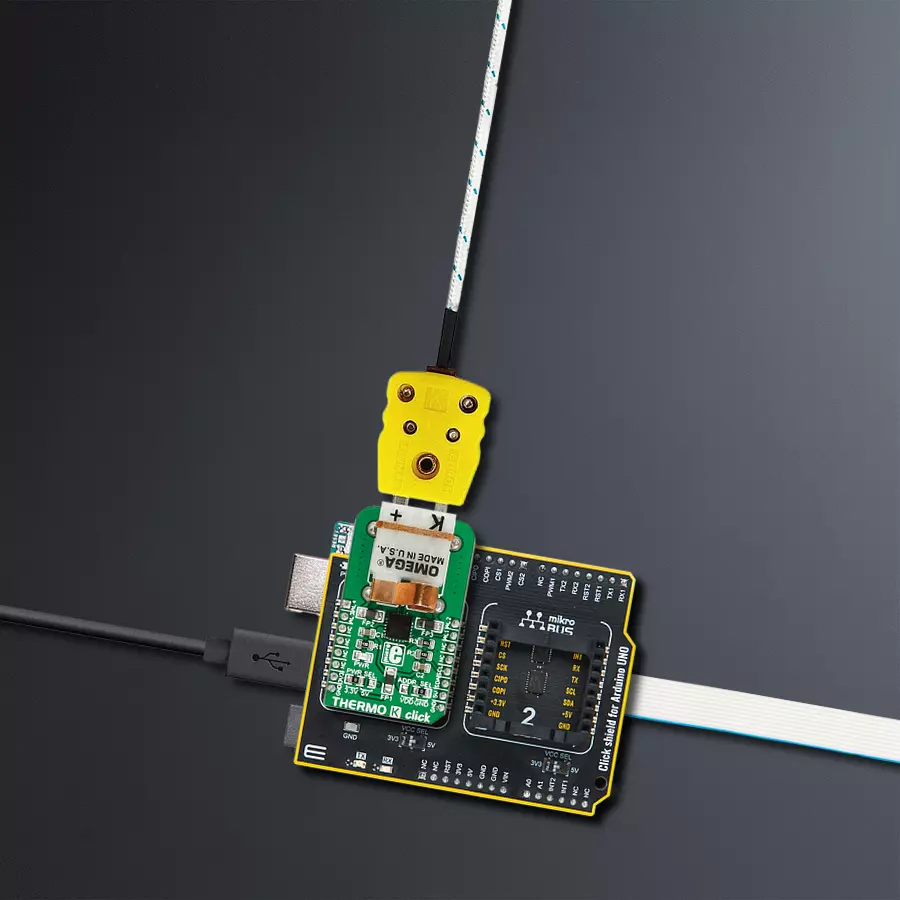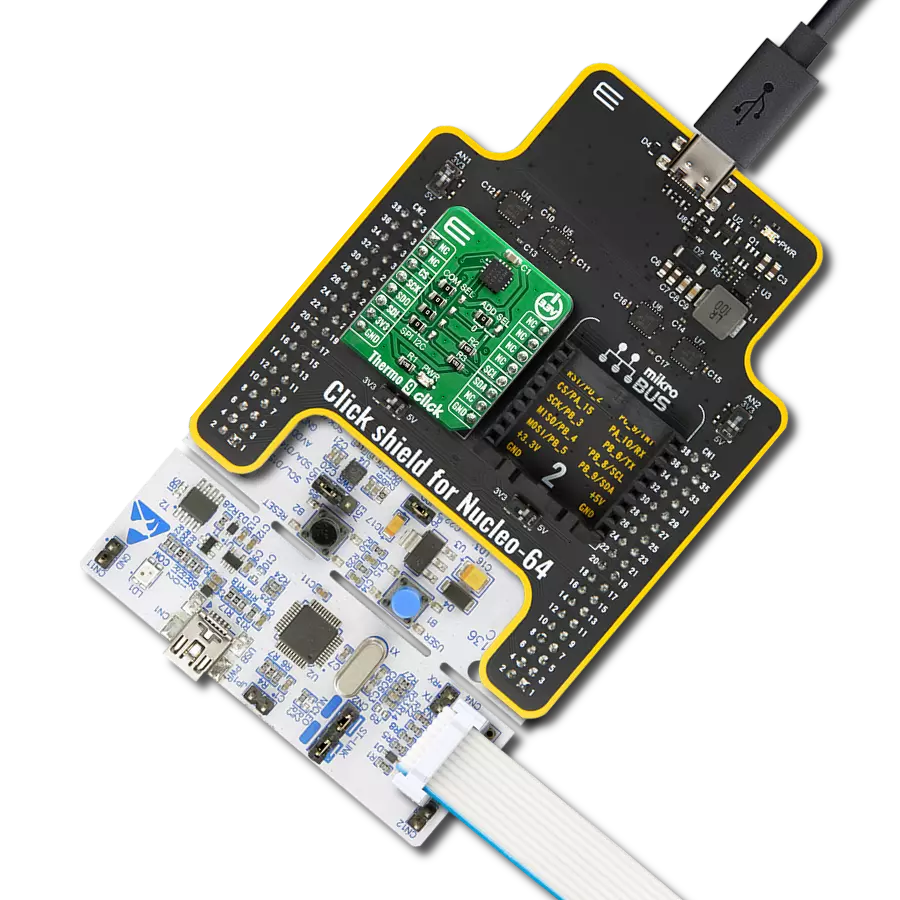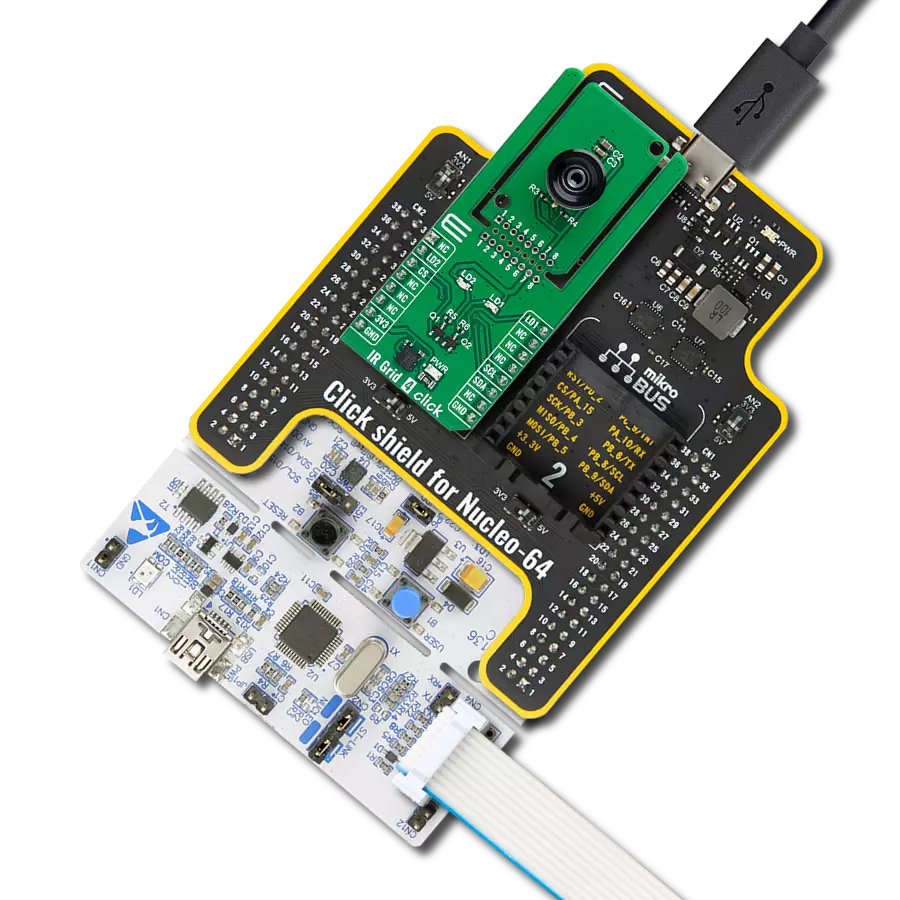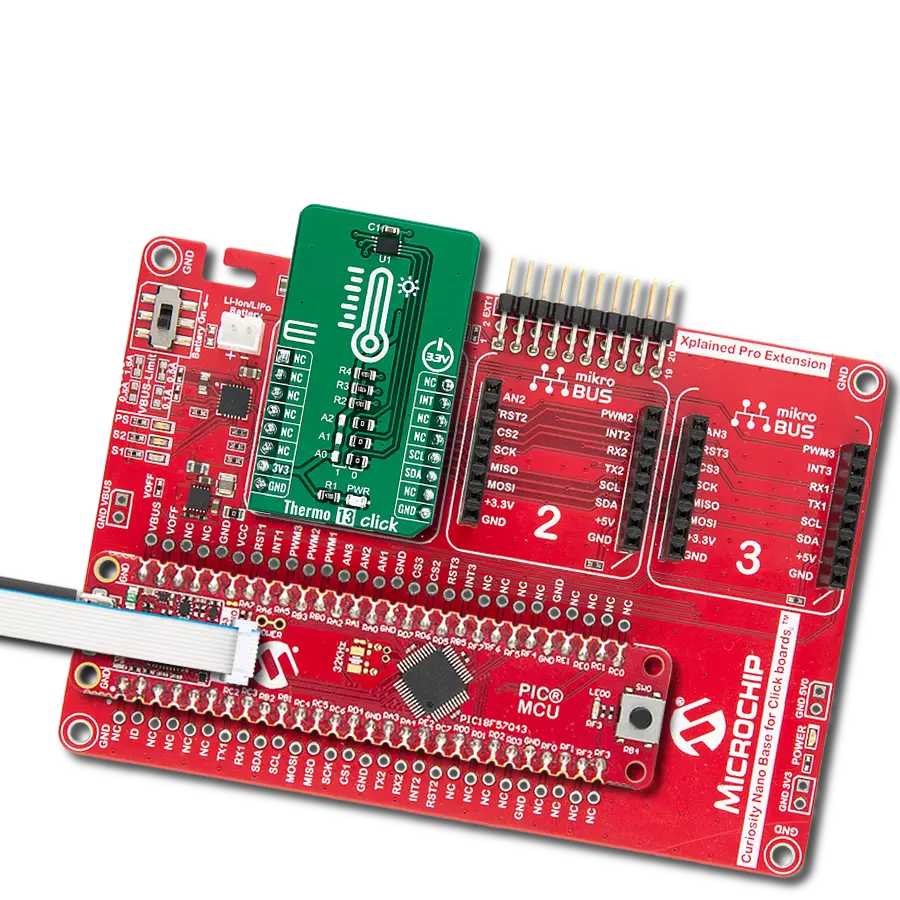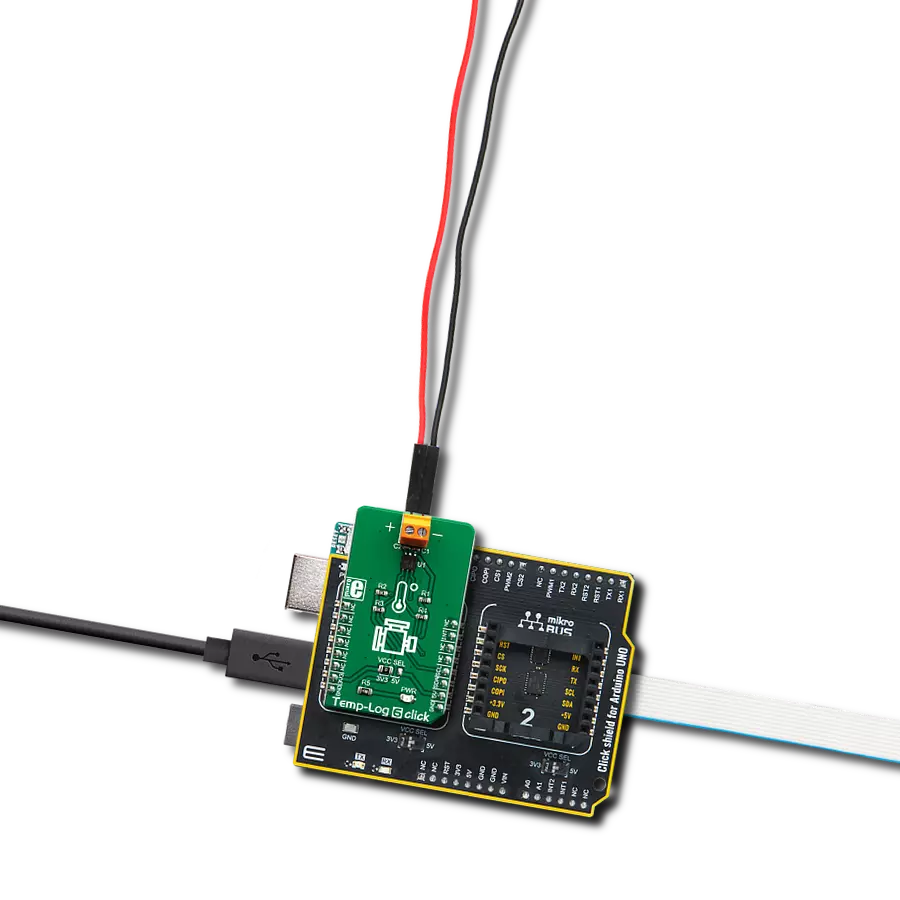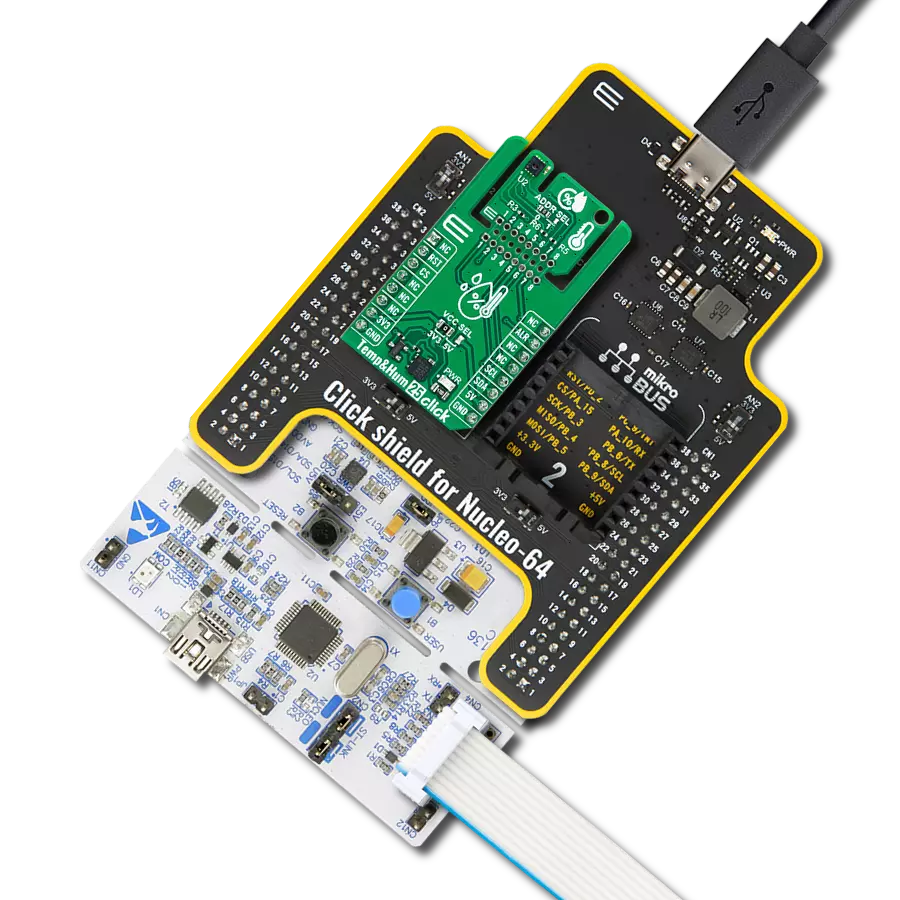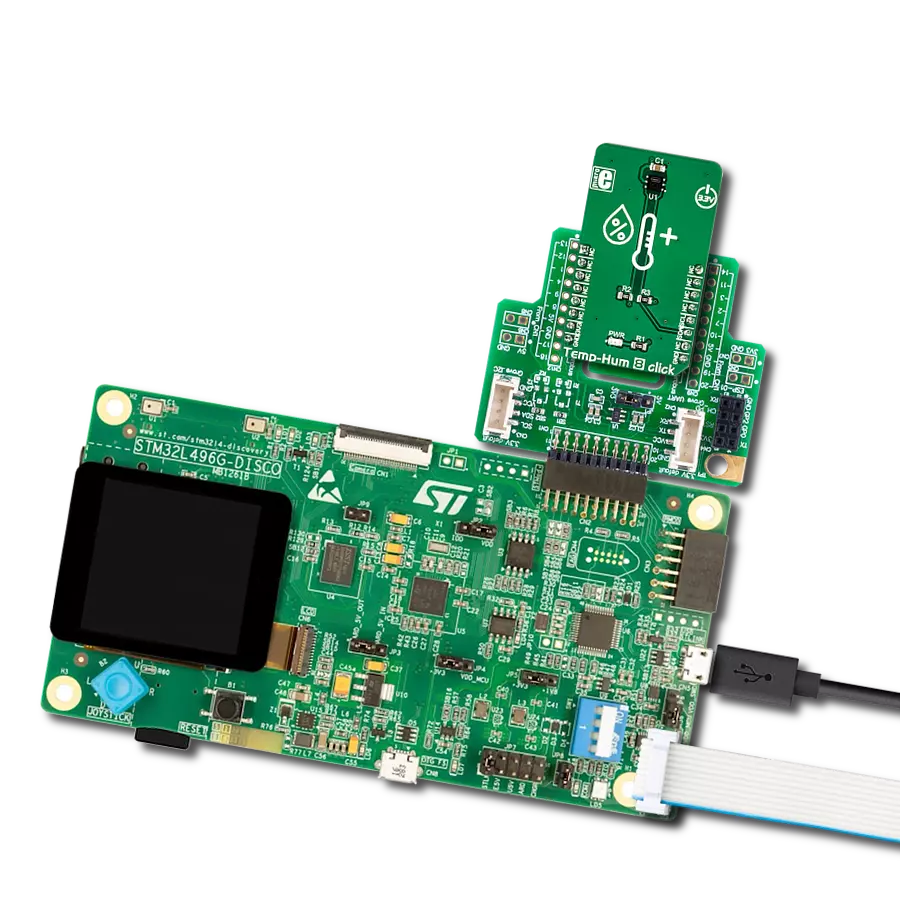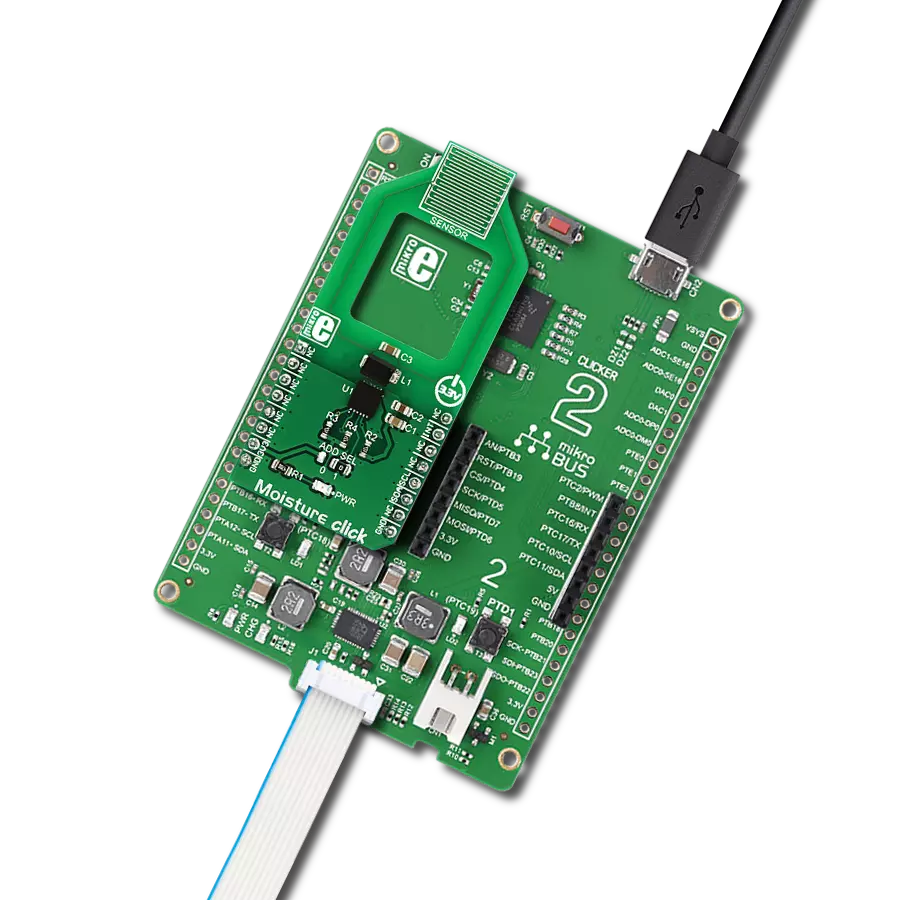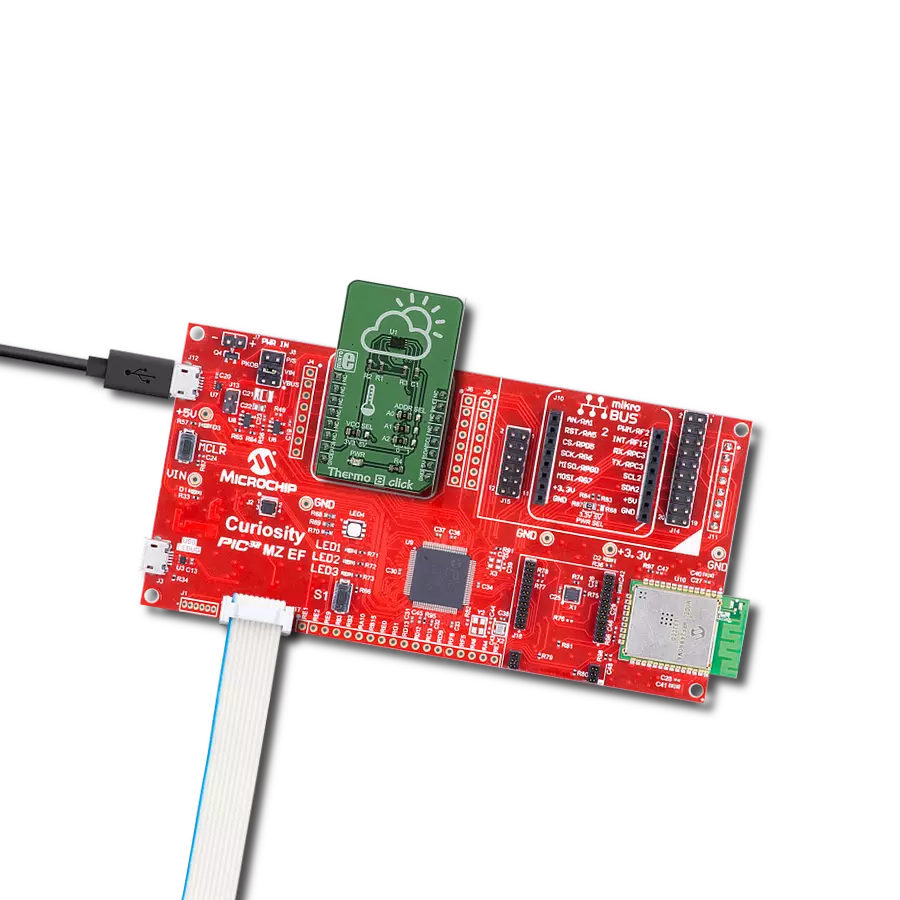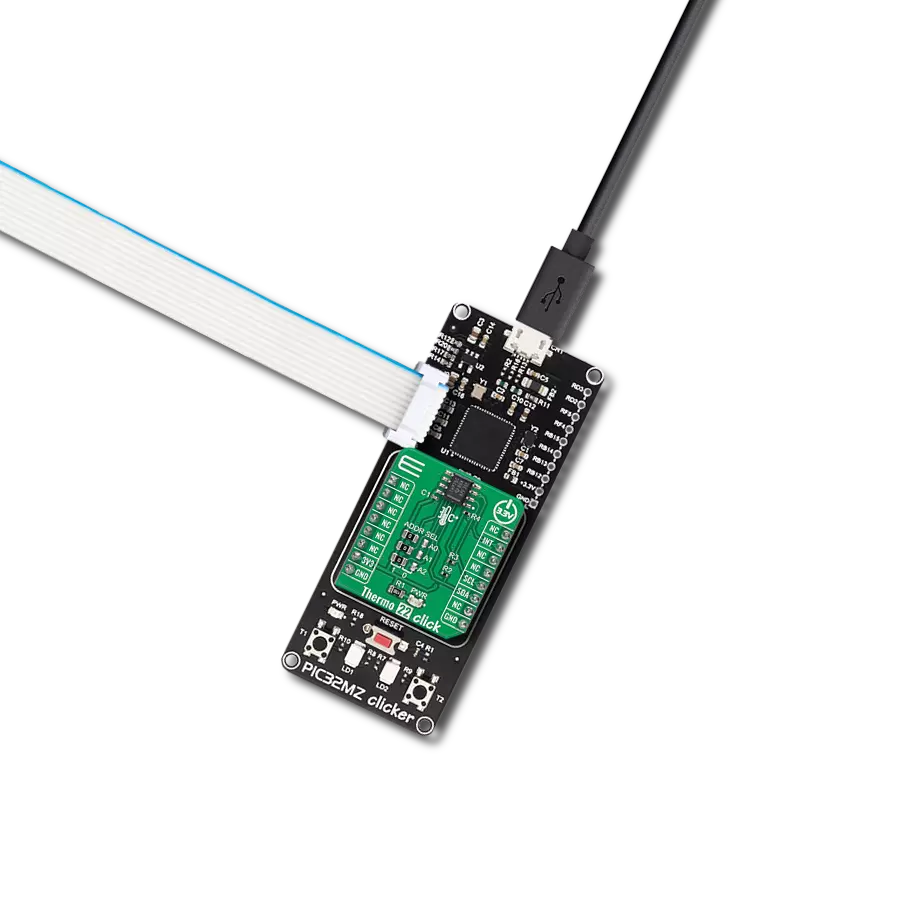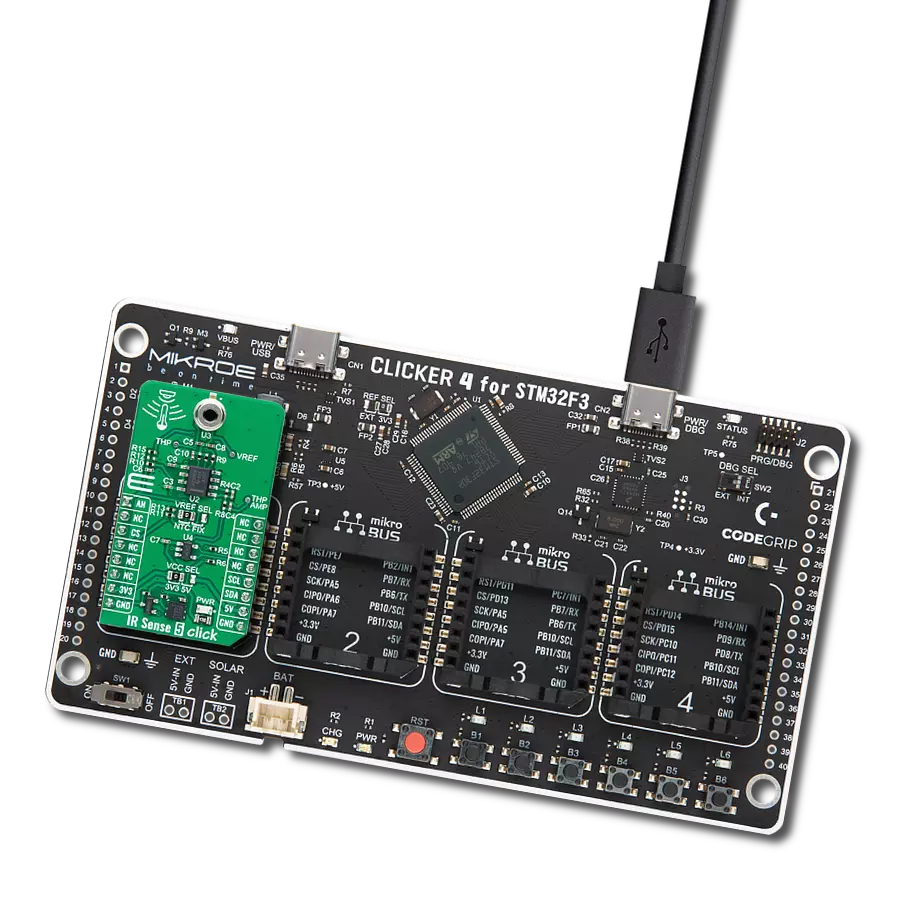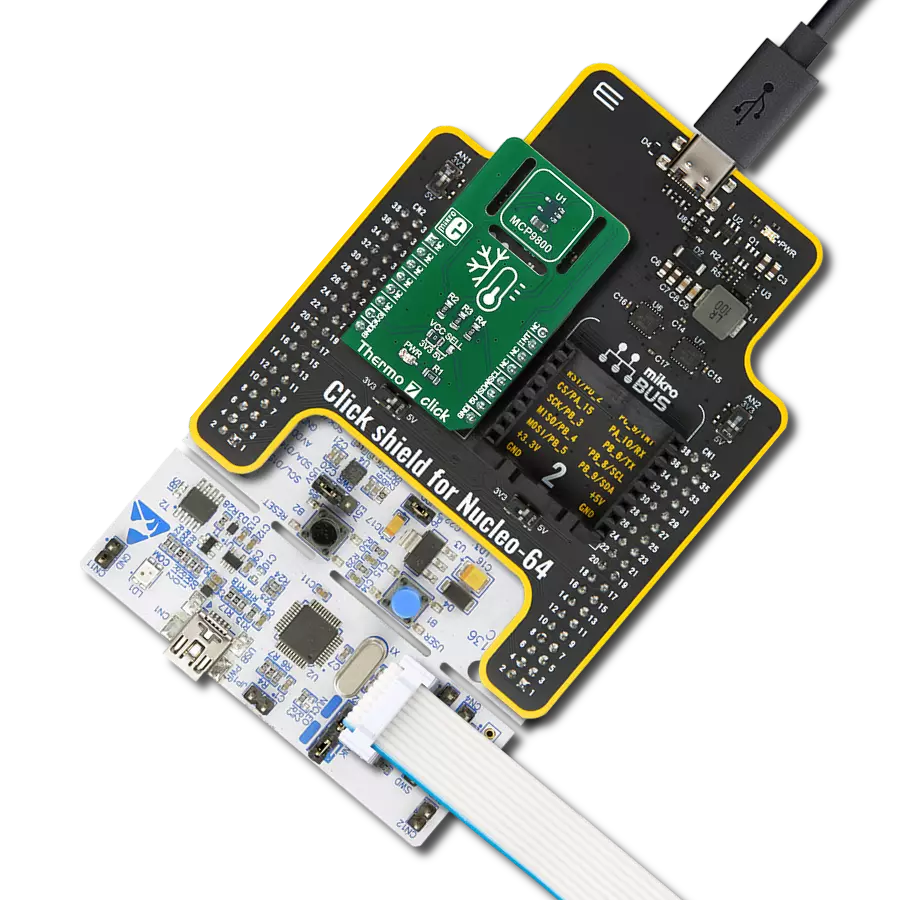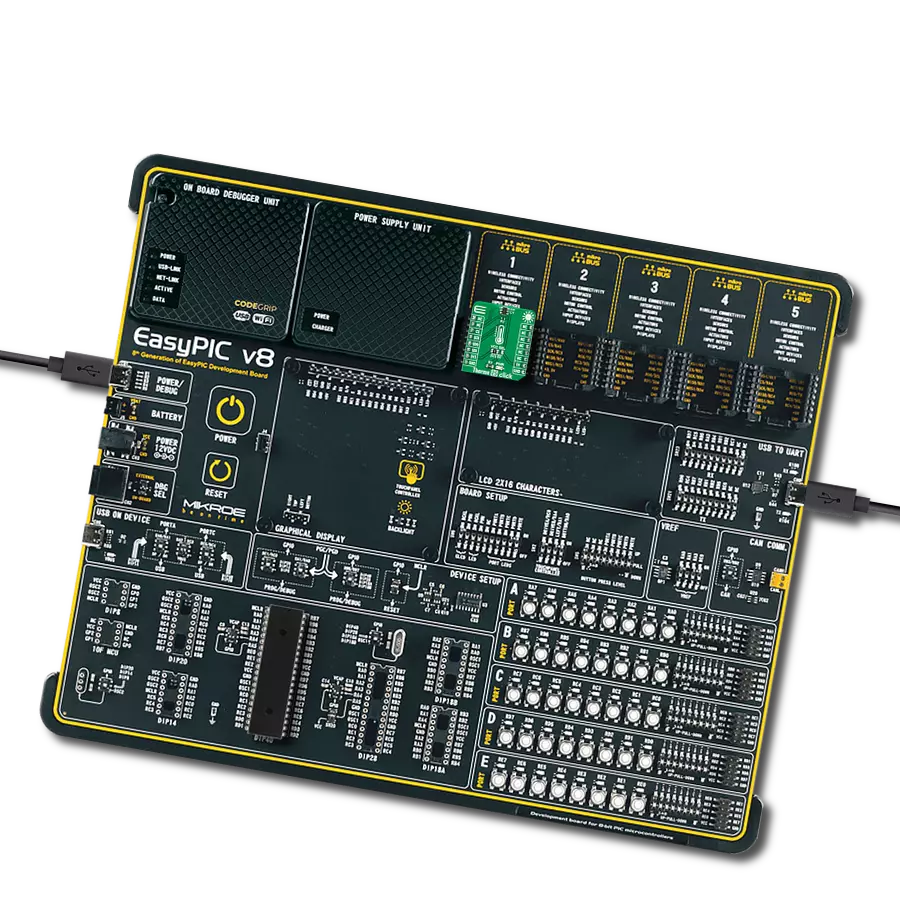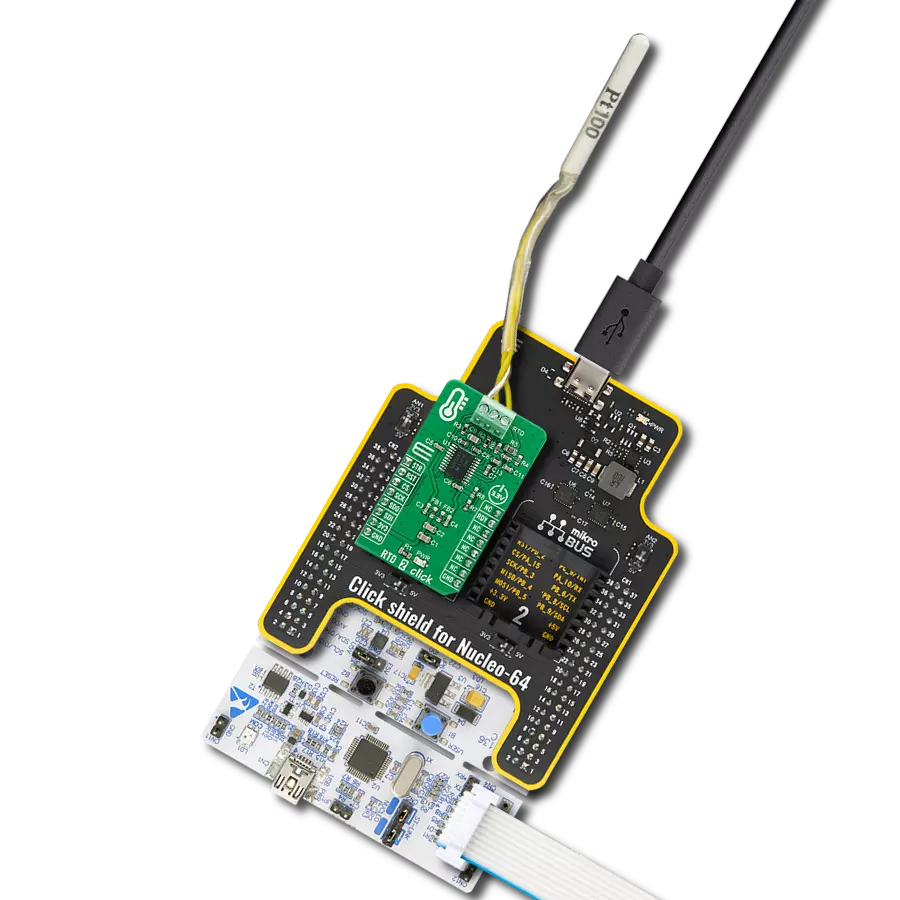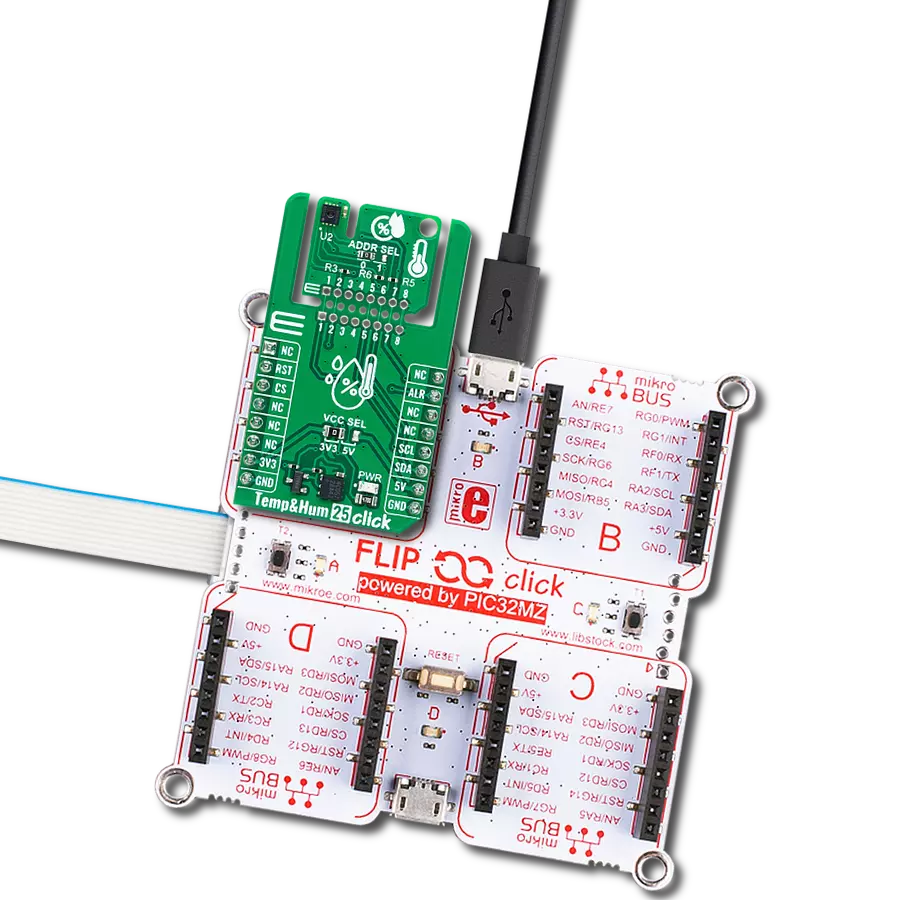Our cutting-edge solution serves as a K-Type thermocouple probe interface, offering unparalleled accuracy and control for all your temperature measurement needs
A
A
Hardware Overview
How does it work?
Thermo K Click is based on the MCP9600, a thermocouple EMF to temperature converter from Microchip. This converter typically has an accuracy of ±0.5°C for thermocouple hot-junction with very good hot and cold-junctions resolution of +0.0625°C. It features four programmable temperature alert outputs that monitor hot or cold-junction temperature, detects rising or falling temperature, and has up to 255°C of programmable hysteresis. In addition, it comes with integrated cold-junction compensation, and the correction coefficients are derived from the NIST Institute database. The Delta-Sigma ADC converter can work in 12/14/16/18-bit selectable resolutions, which is useful for detecting fast temperature transients. The MCP9600 provides
integrated thermocouple open-circuit and short-circuit detection, with an alert signal when the thermocouple wire is broken or disconnected, a feature that comes in handy. In the same way, the alert signal is asserted if the thermocouple wire is shorted to the ground or power. Regarding the alert, the MCP9600 will also notify the wrong polarity either in the Comparator or Interrupt modes. The Comparator mode is helpful for thermostat-type applications to switch fan controllers, LEDs, and more, while the Interrupt mode is more convenient for microprocessor-based systems. The low-power segment comes in Shutdown mode and Burst mode with 1 up to 128 temperature samples. The Thermo K Click uses a standard 2-Wire I2C interface to communicate
with the host MCU, supporting standard 100KHz frequency. The four alert outputs from the MCP9600 can be observed over the AL1, AL2, AL3, and AL4 pins of the mikroBUS™ socket. These are programmable push-pull outputs. The Thermo K Click comes with a PCC-SMP connector for connecting an appropriate probe that MIKROE offers, the K-type Glass Braid Insulated probe. This Click board™ can operate with either 3.3V or 5V logic voltage levels selected via the PWR SEL jumper. This way, both 3.3V and 5V capable MCUs can use the communication lines properly. Also, this Click board™ comes equipped with a library containing easy-to-use functions and an example code that can be used as a reference for further development.
Features overview
Development board
Arduino UNO is a versatile microcontroller board built around the ATmega328P chip. It offers extensive connectivity options for various projects, featuring 14 digital input/output pins, six of which are PWM-capable, along with six analog inputs. Its core components include a 16MHz ceramic resonator, a USB connection, a power jack, an
ICSP header, and a reset button, providing everything necessary to power and program the board. The Uno is ready to go, whether connected to a computer via USB or powered by an AC-to-DC adapter or battery. As the first USB Arduino board, it serves as the benchmark for the Arduino platform, with "Uno" symbolizing its status as the
first in a series. This name choice, meaning "one" in Italian, commemorates the launch of Arduino Software (IDE) 1.0. Initially introduced alongside version 1.0 of the Arduino Software (IDE), the Uno has since become the foundational model for subsequent Arduino releases, embodying the platform's evolution.
Microcontroller Overview
MCU Card / MCU
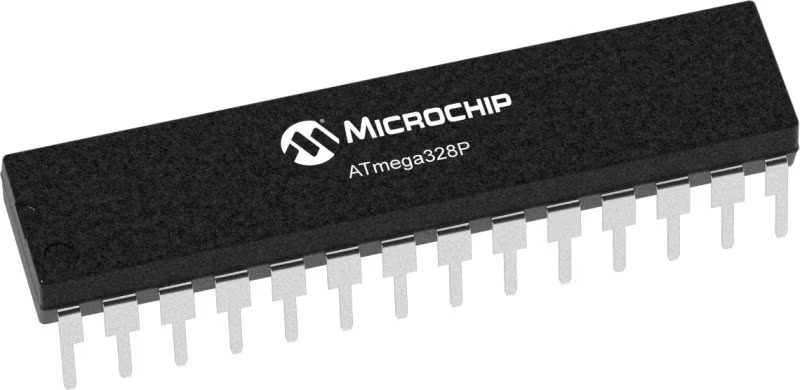
Architecture
AVR
MCU Memory (KB)
32
Silicon Vendor
Microchip
Pin count
28
RAM (Bytes)
2048
You complete me!
Accessories
Click Shield for Arduino UNO has two proprietary mikroBUS™ sockets, allowing all the Click board™ devices to be interfaced with the Arduino UNO board without effort. The Arduino Uno, a microcontroller board based on the ATmega328P, provides an affordable and flexible way for users to try out new concepts and build prototypes with the ATmega328P microcontroller from various combinations of performance, power consumption, and features. The Arduino Uno has 14 digital input/output pins (of which six can be used as PWM outputs), six analog inputs, a 16 MHz ceramic resonator (CSTCE16M0V53-R0), a USB connection, a power jack, an ICSP header, and reset button. Most of the ATmega328P microcontroller pins are brought to the IO pins on the left and right edge of the board, which are then connected to two existing mikroBUS™ sockets. This Click Shield also has several switches that perform functions such as selecting the logic levels of analog signals on mikroBUS™ sockets and selecting logic voltage levels of the mikroBUS™ sockets themselves. Besides, the user is offered the possibility of using any Click board™ with the help of existing bidirectional level-shifting voltage translators, regardless of whether the Click board™ operates at a 3.3V or 5V logic voltage level. Once you connect the Arduino UNO board with our Click Shield for Arduino UNO, you can access hundreds of Click boards™, working with 3.3V or 5V logic voltage levels.
The Type-K thermocouple, equipped with glass braid insulation, is a versatile tool designed for precision temperature measurements, particularly in high-temperature environments. With a calibrated Type-K configuration and a 24 AWG gage wire spanning 2 meters, this probe is engineered to provide reliable readings. Its operational temperature range extends to 480°C (900°F), making it suitable for demanding applications. The glass braid insulation ensures durability and stability during measurements, and the connector body can withstand temperatures up to 220°C (425°F). The Type-K thermocouple probe features a PCC-SMP connector at its end, which offers compatibility with THERMO Click and Thermo K Click boards. This connectivity makes it a valuable tool for various industrial and scientific settings, where precision and reliability in temperature monitoring are essential.
Used MCU Pins
mikroBUS™ mapper
Take a closer look
Click board™ Schematic

Step by step
Project assembly
Software Support
Library Description
This library contains API for Thermo K Click driver.
Key functions:
thermok_get_temperature- Temperature datathermok_get_status- Get statusthermok_get_device_info- Functions for read device info
Open Source
Code example
The complete application code and a ready-to-use project are available through the NECTO Studio Package Manager for direct installation in the NECTO Studio. The application code can also be found on the MIKROE GitHub account.
/*!
* \file
* \brief ThermoK Click example
*
* # Description
* Demo application shows basic temperature reading using Thermo K Click.
*
* The demo application is composed of two sections :
*
* ## Application Init
* Configuring Clicks and log objects.
* Reads the device ID and also checks the Click and MCU communication.
*
* ## Application Task
* Reads Temperature data(Type K probe) and this data logs to USBUART every 500ms.
*
* \author Katarina Perendic
*
*/
// ------------------------------------------------------------------- INCLUDES
#include "board.h"
#include "log.h"
#include "thermok.h"
// ------------------------------------------------------------------ VARIABLES
static thermok_t thermok;
static log_t logger;
static uint16_t device_info;
// ------------------------------------------------------ APPLICATION FUNCTIONS
void application_init ( void )
{
log_cfg_t log_cfg;
thermok_cfg_t cfg;
/**
* Logger initialization.
* Default baud rate: 115200
* Default log level: LOG_LEVEL_DEBUG
* @note If USB_UART_RX and USB_UART_TX
* are defined as HAL_PIN_NC, you will
* need to define them manually for log to work.
* See @b LOG_MAP_USB_UART macro definition for detailed explanation.
*/
LOG_MAP_USB_UART( log_cfg );
log_init( &logger, &log_cfg );
log_info( &logger, "---- Application Init ----" );
// Click initialization.
thermok_cfg_setup( &cfg );
THERMOK_MAP_MIKROBUS( cfg, MIKROBUS_1 );
thermok_init( &thermok, &cfg );
// Check communication and reads device ID
device_info = thermok_get_device_info( &thermok );
if ( ( device_info >> 8 ) == THERMOK_DEVICE_ID )
{
log_info(&logger, "---- Communication OK!!! ----" );
}
else
{
log_info(&logger, "---- Communication ERROR!!! ----" );
for ( ; ; );
}
Delay_1sec( );
}
void application_task ( void )
{
float temperature;
// Task implementation.
temperature = thermok_get_temperature( &thermok,
THERMOK_REG_HOT_JUNCTION_TEMP_THR,
THERMOK_TEMP_IN_CELSIUS );
log_printf( &logger, ">> Temperature is %.2f C\r\n", temperature );
Delay_ms ( 1000 );
Delay_ms ( 500 );
}
int main ( void )
{
/* Do not remove this line or clock might not be set correctly. */
#ifdef PREINIT_SUPPORTED
preinit();
#endif
application_init( );
for ( ; ; )
{
application_task( );
}
return 0;
}
// ------------------------------------------------------------------------ END
Additional Support
Resources
Category:Temperature & humidity
